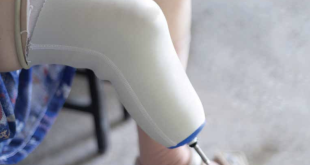Words by Dr Saroj Poudel
“Skin infections can range from mild to severe, with causes varying from bacteria, viruses, fungi, to parasites. Understanding the specific pathogen is crucial for effective treatment and prevention.”
Skin infections are caused by the growth of bacteria or microorganisms just under the skin and enter through minor injuries such as cuts, scrapes and blisters. Infections can vary from mild to serious. Most skin infections are highly treatable. However, an infection can become more serious if it goes deeper into the skin or spreads across much of the body.
People with a weakened immune system have a higher risk of skin infections and complications from skin infections. This could be due to:
- a health condition, such as HIV, diabetes, poor circulation, or malnutrition
- a side effect of medication, such as chemotherapy or biologic drug use
- being older or very young
- have skin folds due to obesity
Types of skin infections
The following are four different types of skin infections:
- Bacterial skin infections
- Viral skin infections
- Fungal skin infections
- Parasitic skin infections
- Bacterial skin infections:
Bacterial skin infections occur when bacteria enter the skin, either from an outside source or because they are present on the skin. They can enter the skin through a hair follicle or after a wound.
Bacterial infections can be systemic or local. Systemic infections can cause symptoms throughout the whole body, such as a fever, while local infections only affect a specific area. Some bacterial infections can begin in one area and spread throughout the body.
Staphylococcus and Streptococcus are bacteria that are commonly present on the skin and only cause a problem in certain circumstances. Some bacterial skin infections, such as impetigo, can spread between people through direct skin contact or with bodily fluids, contaminated food or water, or by touching surfaces where bacteria are present. Others, such as cellulitis, are not contagious.
Different types of bacterial skin infections include:
- Cellulitis
- Impetigo
- Boils
- Hansen’s disease (Leprosy)
Systemic infections that can cause skin rashes include:
- Syphilis
- Tuberculosis
Some bacterial infections are mild and easy to treat with topical antibiotics, while other infections require an oral antibiotic or other medical treatment.
- Viral skin infections:
Viruses can cause different types of infections that have skin symptoms, such as:
- Shingles (Herpes Zoster)
- Chickenpox
- Molluscum contagiosum
- Warts
- Measles
- Hand, foot, and mouth disease
These viruses are often contagious, and most are systemic.
- Fungal skin infections:
These types of skin infections are caused by fungus and are most likely to develop in moist areas of the body where surfaces meet, such as the feet, armpit, or where there are skin folds.
Different types of fungal infections:
- Athlete’s foot
- Yeast infection
- Ringworm
- Nail fungus
- Oral thrush
- Diaper rash
“Individuals with weakened immune systems face a higher risk of skin infections, emphasizing the importance of preventive measures. Hand hygiene emerges as a fundamental practice in the prevention of skin infections across all causes.”
- Parasitic skin infections:
These types of skin infections are caused by a parasite. These infections can spread beyond the skin to the bloodstream and organs. A parasitic infection isn’t life-threatening but can be uncomfortable.
Different types of parasitic skin infections include:
- Lice
- Bedbugs
- Scabies
What are the symptoms of a skin infection?
The common symptoms of skin infections include:
- redness on pale skin, or purple or darker areas of skin if you have a darker skin tone
- lesions that may be flat or raised, bumpy, wart-like, and so on
- itching
- pain and tenderness
In some cases, a person may also have other symptoms, such as a fever.
Signs of a severe infection include:
- pus
- blisters
- skin sloughing, breakdown
- dark areas that can indicate necrosis or tissue death
- pain and discoloration
- widespread swelling
Treatment:
Treatment depends on the cause of the infection and the severity. Some infections will go away on their own or respond to topical creams. If an infection is severe, the person is at risk of complications, or the infection is contagious, a doctor may prescribe medication such as:
- antibiotics
- antivirals
- antifungals
- antiparasitic agents
The form of the medication will partially depend on the severity of the infection or the risk of complications. A person with a severe infection may need to spend time in the hospital.
“An ounce of prevention is worth a pound of cure: practicing good hygiene, avoiding direct contact with contagious individuals, and promptly addressing wounds can significantly reduce the risk of skin infections. Regular hand washing remains the cornerstone in preventing the spread of infections in any setting.”
How to prevent skin infections?
As the common saying goes, “An ounce of prevention is worth a pound of cure.” Taking simple precautions can help prevent the onset of common skin infections. If you are wondering how to prevent skin infections, read some simple ways that can help:
- Stay away from being in direct contact with people with contagious skin infections.
- If you have an open wound, dress it properly.
- Wash your hands frequently.
- Maintain good hygiene.
- If your baby or an adult is using diapers, make sure they are changed frequently.
- If you get a cut, scrape, or insect bite, wash it right away.
- Always wash and clean any shared items like toys, bedding, etc.
- If you have a school-going kid, keep checking their hair regularly for lice.
- Do not share personal use times like towels, clothes, hair brushes, etc.
- If you feel you have a skin infection, consult a dermatologist, especially if you are diabetic.
What is the most important way to prevent the spread of skin infections?
Hand washing (hand hygiene) is the most important way to prevent the spread of skin infections in any setting.
To wash your hands properly:
- Wet your hands with clean water and apply soap. Use warm water if it is available.
- Rub hands together to make a lather and scrub all surfaces.
- Continue rubbing hands for 20 seconds (the time it takes to sing “Happy Birthday” twice).
- Rinse hands well with clean water.
- Dry your hands using a paper towel or air dryer.
- If possible, use your paper towel to turn off the faucet.
If soap and water are not available and your hands are not visibly dirty, use an alcohol-based hand sanitizer (70% alcohol or greater).
To use an alcohol-based hand sanitizer:
- Apply product to the palm of one hand.
- Rub hands together.
- Rub the product over all surfaces of hands and fingers until hands are dry.
Takeaway:
- Skin infections can result from bacterial, viral, fungal, and parasitic causes. The way they affect the body will depend on the specific pathogen. Some cause skin symptoms as part of a wider infection, while others cause local symptoms only.
- Skin infections are often highly treatable, but severe symptoms and complications can arise if a person has a weakened immune system.
- Some infections are contagious, such as scabies, and people need to take care not to pass them on before or during treatment.
- See your dermatologist if you have any concerns about signs of a skin infection.
 Medicosnext
Medicosnext




